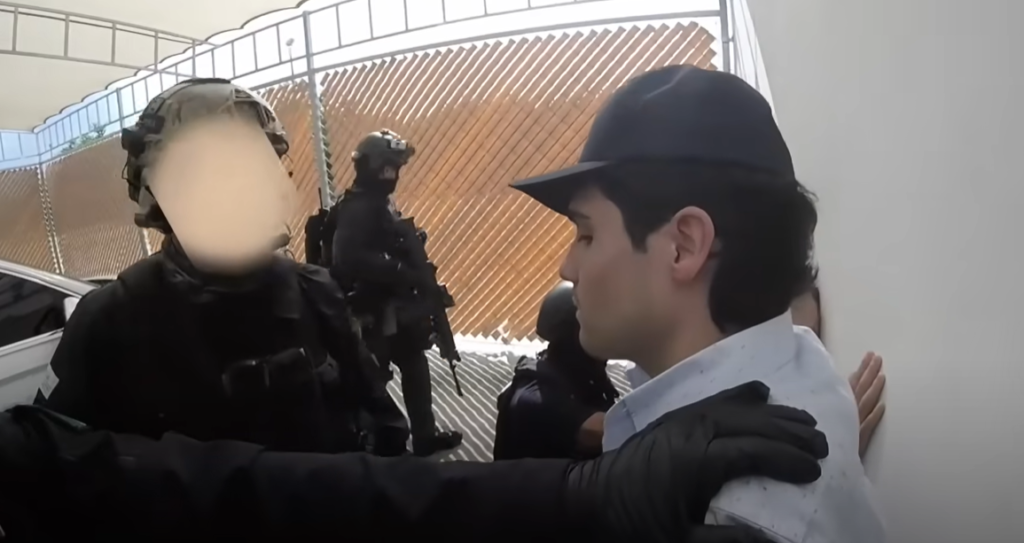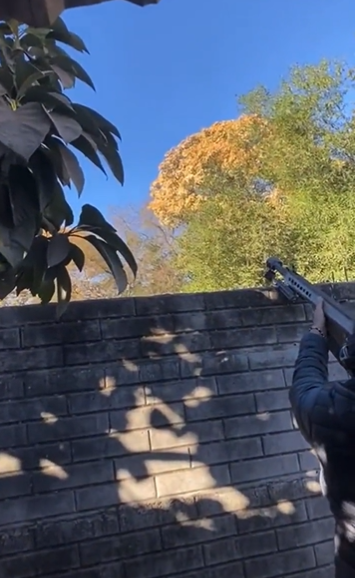The Rundown
On January 5, 2023, Mexican authorities arrested Ovidio Guzman-Lopez in a deadly raid in Culiacán, Mexico. According to reports, 10 Mexican soldiers and 19 cartel members died during the incident. Since then, violence has flooded the streets of Culiacán and will likely worsen.
Ovidio is the son of former Sinaloa cartel head Joaquin “El Chapo” Guzman. Following El Chapo’s arrest and extradition to the United States in 2015, the cartel’s leadership went to his right-hand man Ismael Mario Zambada García. El Chapo’s sons Ovidio, Ivan, Jesus, and Juaquin began working their way up the leadership ranks as well, forming their own cartel faction known as Chapitos. Ovidio is the alleged leader of Chapitos.
In October 2019, Mexican authorities arrested Ovidio in Culiacán.

Following the arrest, members of the Sinaloa cartel flooded the streets, armed and ready to fight. An all-out offensive ensued against the Mexican security forces deployed in Culiacán, resulting in multiple casualties. The violence led Mexican president Lopez Obrador to withdraw his forces and immediately release Ovidio.
In doing this, Obrador was trying to avoid the potential loss of innocent lives. However, the cartel, emboldened by Ovidio’s release, used its extensive social medial presence to paint a different picture. They filled the internet with memes mocking the president, portraying him as weak and submissive.

Violence, Drugs, and Influence
Since the release of Ovidio in October 2019, the Chapitos have become increasingly violent as they fight not only with rival cartels, but with rival factions within the Sinaloa cartel. The Chapitos have used this aggressive ambition to continually attempt to extend their control. In addition to pushing farther north into Baja California and Sonora, they have stretched as far south as Mexico City.
The Sinaloa cartel has always profited from dangerous and lucrative drug trafficking activities, especially from those involving the United States. The cartel has grown to be one of the largest narcotics distributors in the world and the top supplier to the United States, smuggling several tons of narcotics per day. Originally starting with marijuana and cocaine, the cartel now traffics more dangerous drugs such as heroin and fentanyl. This shift has prompted the cartel to increase its use of violence, expanding its control over new regions.
The brothers consistently display their influence, flashing their wealth on social media to their large following. Videos of cartel members mocking police officers and security forces have also become increasingly common, showing officers apologizing and backing away once they learn the individuals they confronted are cartel members. While it’s unclear if these officers are motivated by fear or monetary gain, it is very clear that the cartel’s influence is unmatched.
Violence as a Tactic
Violence has been the cartel’s primary tactic for gaining control over the civilian population and security forces. Severe acts including executions, hangings, and bombings are all used to incite fear and gain compliance. Conventional military tactics such as ambushes, checkpoints, and attacks have also been used against the Mexican security forces with great success. Their successful violent campaigns have allowed the cartel to gain economic control of the region and influence the Mexican government.
Following the arrest of Ovidio, cartel members in the Culiacán region used these brutal tactics to pressure the Mexican government to release him. Videos circulating on social media show cartel members firing at airplanes with .50 caliber rifles, trying to down the aircraft. One of these videos depicts a commercial airline taxiing on the runway, with passengers ducking for cover while cartel members shoot at it with automatic weapons.

The cartel’s efforts were successful—the airport was shut down for commercial and government aircraft. Other cartel videos show convoys of vehicles heading into Culiacán, where they established checkpoints and conducted ambushes. Additional clips show the situation outside the Culiacán prison, with Mexican authorities taking cover and returning fire against cartel members.
Capabilities
The success of the cartel’s offensive campaigns can be attributed to their ability to conduct conventional military operations. Their capability equals and sometimes surpasses that of the Mexican security forces and military. The recent Culiacán violence demonstrates the cartel’s proficiency in using .50 caliber weapons, 40mm grenade launchers, fully automatic weapons, body armor, and weapon-mounted vehicles. While the Mexican military may have aircraft and armored vehicles, the weapons at the cartel’s disposal present a significant challenge. This was recently highlighted in Culiacán when military aircraft could not respond to the area due to .50 caliber and automatic gunfire directed at the aircraft.
The Takeaway
With violence successfully leading to the release of Ovidio after his first arrest in 2019, it is expected that this level of violence will continue. Reports indicate that the Mexican government will wait to extradite Ovidio to the United States until the situation in Culiacán has reached a peaceful resolution. As of today peace seems unlikely. The cartel has issued an ultimatum to the government, stating that if Ovidio was not released within 72 hours, they would begin targeting government buildings and critical infrastructure. As of Sunday night, 3,500 soldiers arrived in Culiacán to reinforce the city.
The actions of the Mexican government in the upcoming days and weeks could significantly impact the cartel and its hold on the region.
